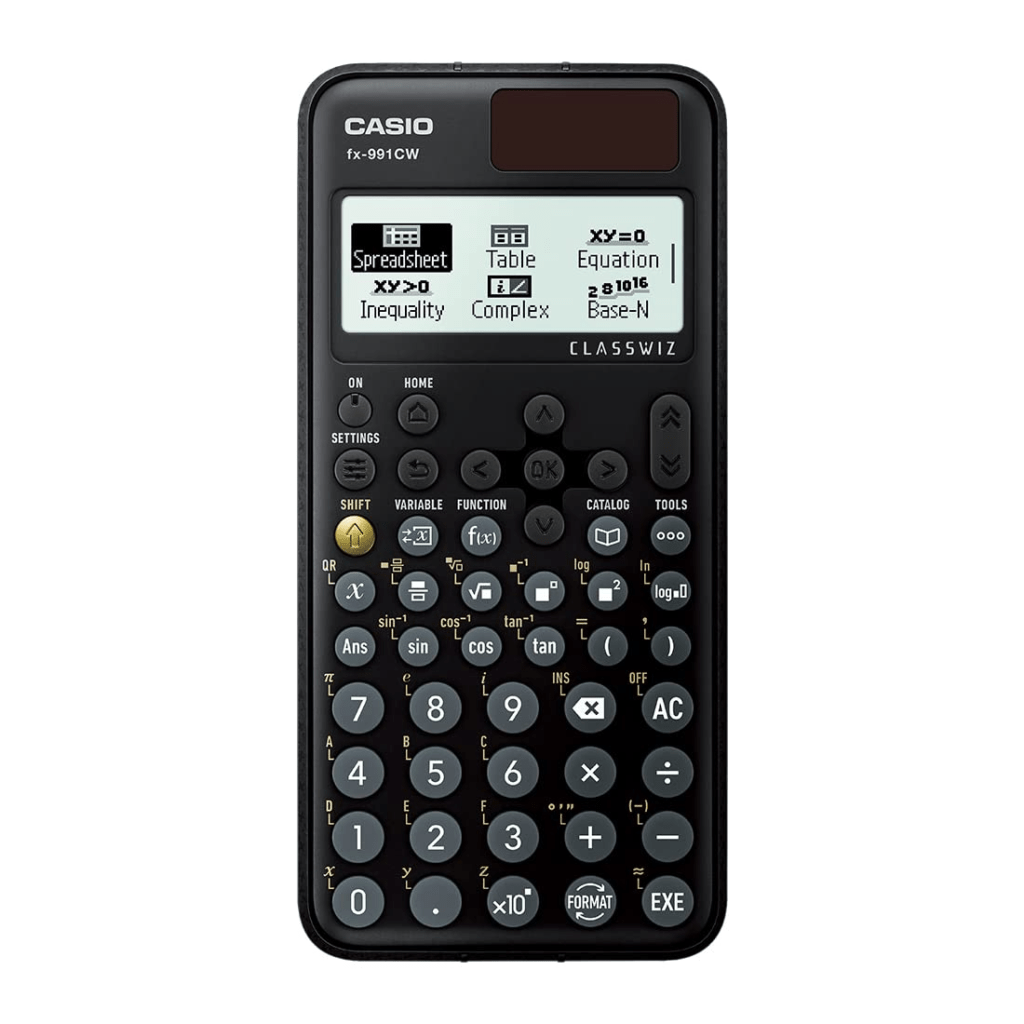Best calculators for engineers

Best calculators for engineers– Since its invention over thirty years ago, the electronic calculator has evolved from a machine that could only perform simple four-function operations (addition, subtraction, multiplication, division) into one that can now also execute highly-technical algebraic symbolic manipulations instantly and accurately. Each new generation of calculators builds on the previous one with heightened speed and more advanced capabilities. At the same time, the cost of a basic calculator has dropped so low that virtually every household in the United States can afford at least one.
1. Casio FX-82MS 2nd Gen Non-Programmable Scientific Calculator (400-500 Rupees)

2. Casio FX-991ES Plus-2nd Edition Scientific Calculator ( 1100-1200 rupees)

3. Casio FX-991EX Classwiz Non-Programmable Scientific Calculator, 552 Functions with Menu Driven Interface ( 1300-1500 rupees)

4.Casio FX-991CW Classwiz Non-Programmable Scientific Calculator (1300-1500 rupees)

Best calculators for engineers – Importance
Best calculators for engineers– Calculators allow students access to mathematical concepts and experiences from which they were previously limited with only paper and pencil. Because calculators make possible mathematical exploration, experimentation, and enhancement of learning mathematical concepts, the National Council of Teachers of Mathematics (NCTM) and various other organizations and individuals recommend that appropriate calculators be made available for use by students at every grade level from kindergarten through college. Despite the extensive research documenting the benefits of calculator use, there are still many skeptics who worry that calculator use will impair students’ mathematical ability and result in increased mathematical illiteracy.
A calculator is a portable electronic device or software tool designed to perform mathematical calculations swiftly and accurately. It simplifies complex arithmetic operations and enables users to handle calculations with ease. Initially invented as mechanical devices, modern calculators come in various forms, ranging from simple handheld devices to sophisticated scientific, graphing, and even software-based versions on computers and smartphones.
Basic calculators are equipped with functions such as addition, subtraction, multiplication, and division, making them ideal for simple calculations. On the other hand, scientific calculators offer more advanced capabilities like trigonometric, logarithmic, and statistical functions, catering to students, scientists, engineers, and professionals.
Graphing calculators, designed for mathematics and science students, display graphs and charts, making it easier to visualize mathematical relationships and analyze data. Moreover, calculator apps on smartphones and computers have become ubiquitous, providing easy access to basic and scientific calculations on-the-go.
The reality, however, is that calculators are valuable educational tools that allow students to reach a higher level of mathematical power and understanding. By reducing the time that, in the past, was spent on learning and performing tedious paper-and-pencil arithmetic and algebraic algorithms, calculator use today allows students and teachers to spend more time developing mathematical understanding, reasoning, number sense, and applications. Four-function, scientific, and graphing calculators, as well as calculators with computer symbolic algebra manipulation capability provide new pedagogical enhancement opportunities. They afford students learning tools that complement, but do not replace, mental and paper-and-pencil skills, and they expand students’ ability to solve problems by providing multiple solution techniques.
